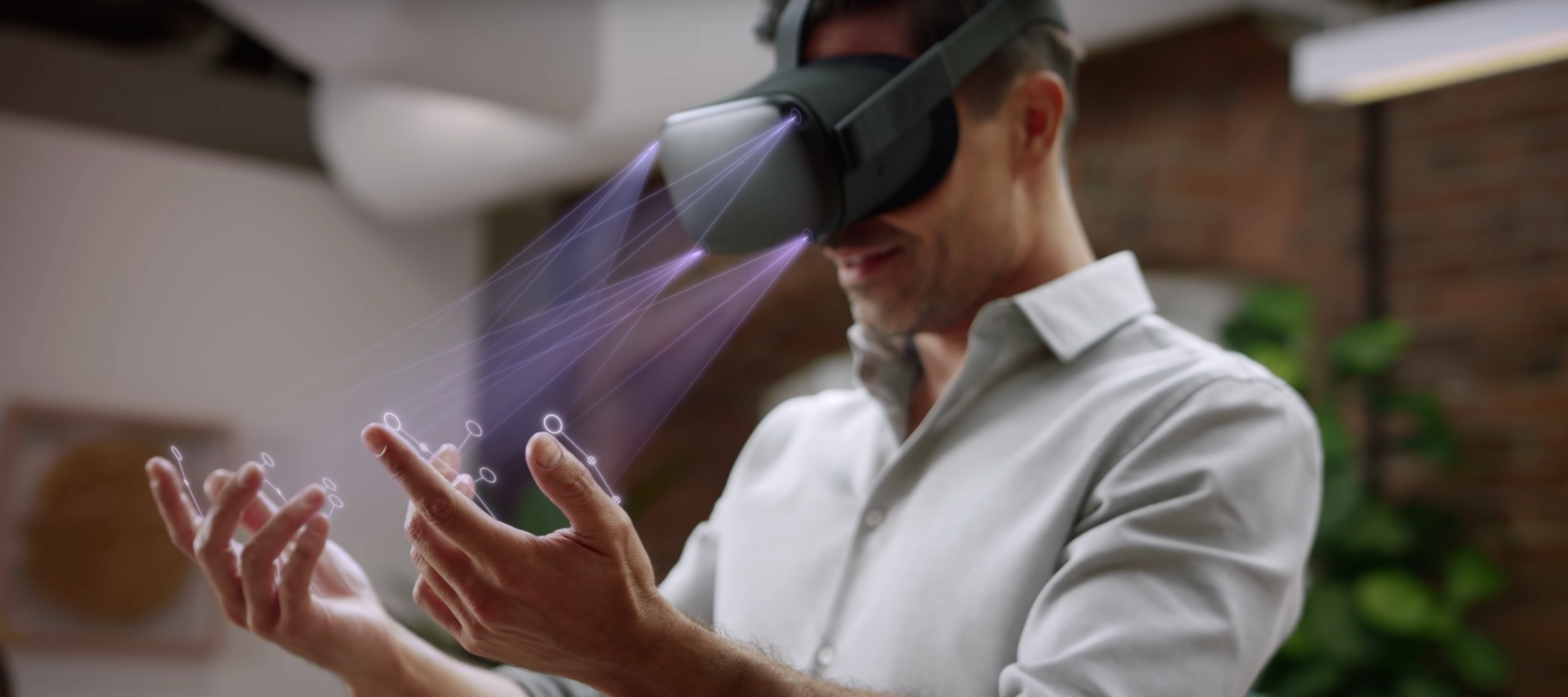Insights From The Blog
New Hand Tracking Update for the Oculus Quest
When it hit the market in early 2019, the Oculus Quest promised to be a game-changer in the world of VR and promised to make it mainstream. VR has now been around for several years, but hasn’t been as popular as many had hoped. The devices available on the market seemed to be either very cheap and only partially successful or fairly expensive and out of the reach of many.
Part of the problem with VR systems was that cheap systems relied on the accelerometer from a mobile phone to measure and control movement, while higher-end systems employed large and sometimes a bit unwieldy hand controllers. The Quest has its own set of hand controllers, and they were considered fairly premium compared with some other devices, and both connected and worked well. But the fact was that you still had something a bit alien in your hand, with a slightly confusing button layout, that is subtly different to other hand-held controllers.
The Oculus Quest continues to be a dominant device in the world of VR by virtue of its extended features, including experimental features, which can be accessed through a special menu option. If you upgrade to software version v12, then new on the experimental features is hand tracking, and this could be the game-changing feature that VR needs to propel it into the wider audience that it deserves.
Once the feature is activated, you can switch between touch controllers and hand tracking with a toggle switch in the Oculus Home menu, though don’t get too excited just yet. Oculus has added the feature already but there won’t be much that you can do with it for the moment. The company says that the headset’s Library and Store interfaces and the Oculus Browser and Oculus TV apps will work, but not much else for now. However, these prove the principle of the feature and the future can only get better because of it. While it may be a small start, Oculus plans to release the developer toolset for hand tracking to app makers, so it shouldn’t be too long before independent developers start creating games and apps that make great use of this feature.

The Oculus headset is able to monitor hands without the need for controllers because of its inside-out design and the use of external sensors that identify and track where parts of your body – such as hands – are. By this means, the Oculus Quest always knows where your appendages are and, in that way, can be substitutes for physical controllers.
The hand tracking feature is driven by new techniques in deep learning and model-based tracking, developed by the company. Oculus is effectively saying that the software can perform even more precise and realistic tracking of your individual finger movements than with a hand-held controller just by letting you just use your hands as you normally would. The possibilities in both gaming and even industrial applications are endless.
Make no mistake, this is a big deal and has the potential to drive Oculus products way ahead of the opposition, all of whom still rely on physical controllers and will do for some time as they don’t have the same design architecture. And all the time, Oculus are likely to make great strides particularly with the release of the developer kit. Unity Developers are now starting to roll out a sign language app that will work with this kind of technology, which will demonstrate the power and usability of the technology.
If there wasn’t a desire to spend out on an Oculus Quest before, there certainly is now.